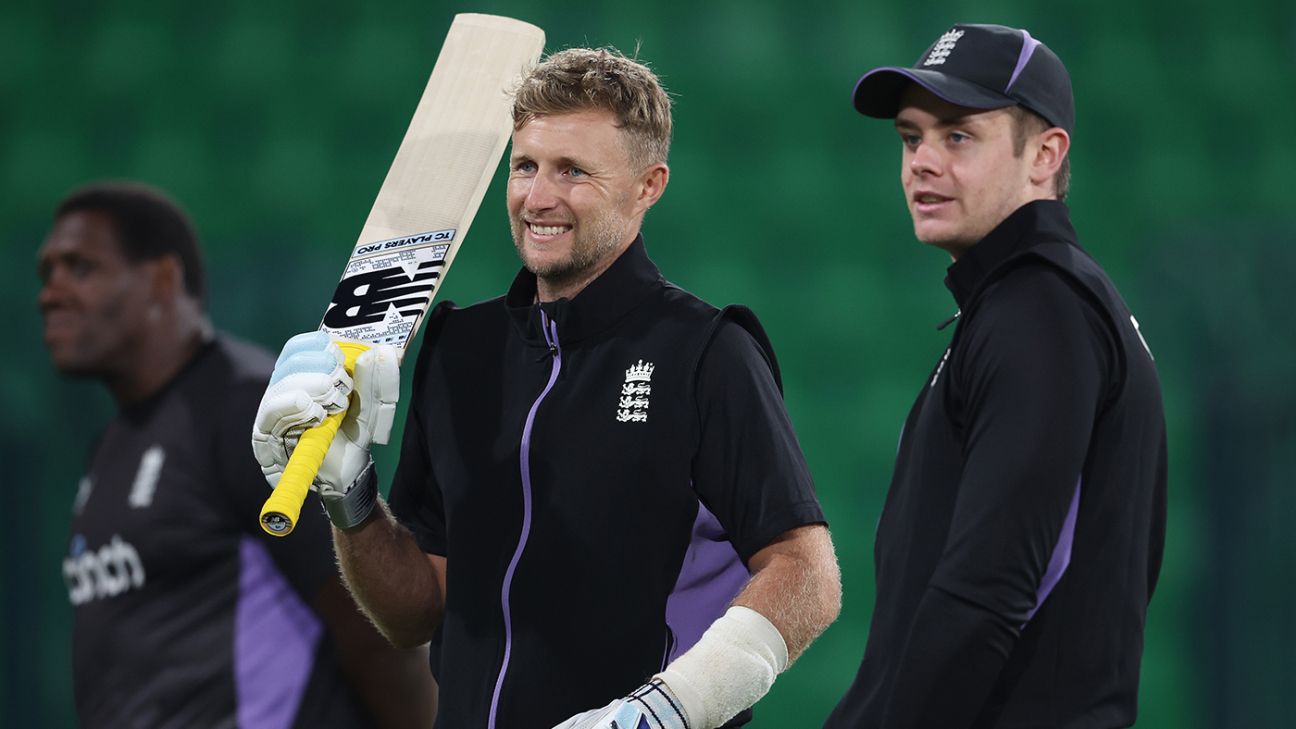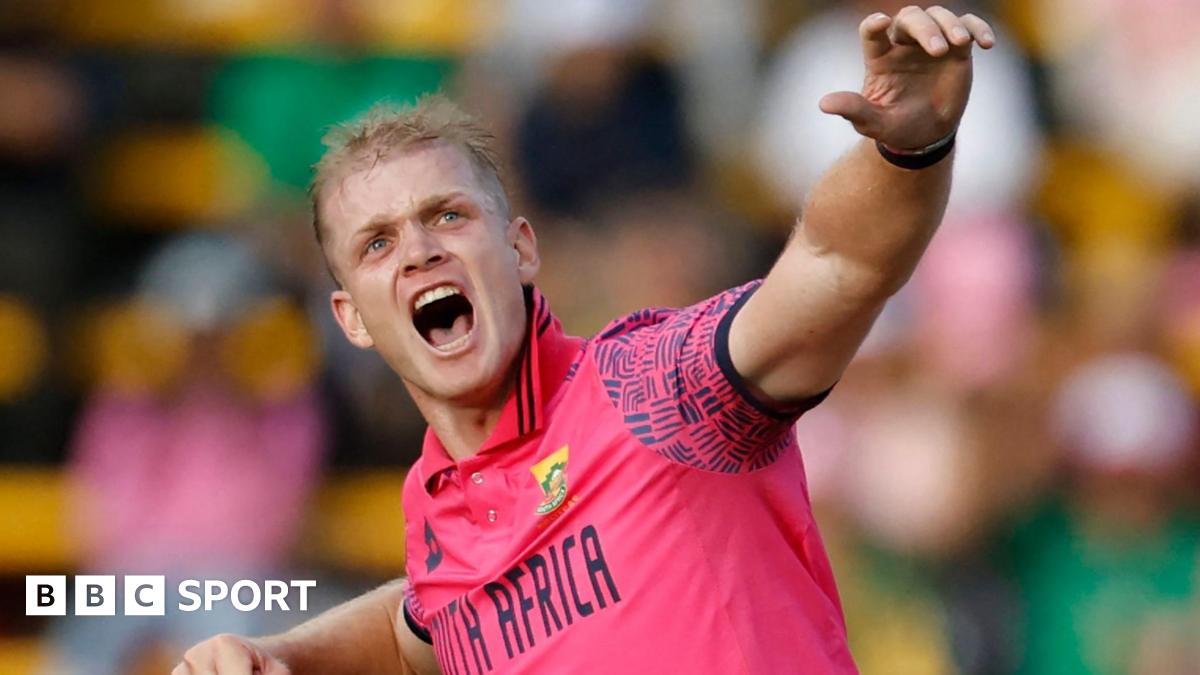Buttler: Smith has ‘free hit’ at No. 3 in reshuffled England batting order

When the Gaddafi Stadium in Lahore was rebuilt over the past few months at breakneck speed, the PCB may have envisioned it opening with cricket’s most ferociously rivalry, but cricket’s oldest rivalry will have to do instead. With Pakistan not guaranteed a game at this venue at all, there was no other game here with greater demand for tickets than England vs Australia, where the winners of the last two ODI World Cups kick off their Champions Trophy campaigns.
This, however, is not going to be a battle of two current white-ball titans. Neither side starts off this tournament a picture of ODI health, and it is how they address – or, more pertinently, conceal – their weaknesses that may be most consequential to the outcome. England have lost 16 of their last 23 ODIs in a run stretching back to the 2023 World Cup, while Australia have come up second best in six of the last eight games. They are further hampered by injuries and high-profile withdrawals: none of Pat Cummins, Josh Hazlewood, Mitchell Starc, Mitchell Marsh or Marcus Stoinis are part of Australia’s squad.
After something of a horror ODI series against India, England’s most significant tactical move may be something of a defensive ploy masquerading as aggression. Announcing their starting XI two days out from the game, they revealed wicketkeeper Jamie Smith will bat at No. 3 for the first time in his international career.
“We just feel it’s a nice position to give him a free hit to try and really impact the game, make that that top three really dynamic,” Jos Buttler, England’s captain, said. “Jamie’s someone with incredible talent and taken to international cricket so well that we feel he’s got the game there and can place him in that position to try and have a really big impact with a number of guys behind him.”
It’s the closing bit of that statement, perhaps, that unearths a more rounded reason for what, if England’s recent history is anything to go by, is an on-brand punt. Against India, England’s more established middle order was especially vulnerable to collapses against India’s spinners in the middle overs.
While a calf injury ruled Smith out of that series, his ability against spin in Pakistan was best showcased in the longest format. October’s third Test in Rawalpindi was over on the third morning on an excessively spin-friendly wicket; Pakistan did not bowl a ball of seam and all 20 England wickets fell to the spinners.
But with England on the ropes at 118 for 6, it was Smith who launched a remarkable counter-attack, hitting five fours and six sixes in a 119-ball 89 to allow England to rack up 267. It included an astonishing takedown of Pakistan’s premier offspinner Sajid Khan, scoring 61 runs at a run a ball against him without giving away his wicket.
“He’s obviously got the game technically and tactically, but I think the head on his shoulders seems to be one of the biggest strengths,” Buttler said. “Nothing seems to faze him too much: I think you could ask him to bat anywhere in the line-up and it wouldn’t faze him. We feel it gives him a nice position to try and really impact the game, make some big runs, and put some pressure on the opposition.”
It means Joe Root, Harry Brook and Buttler himself slot down the order, spreading England’s quality through the middle overs and – theoretically at least – inoculating against the sort of collapses that characterised their white-ball tour of India. The cynical view would term this a rearranging of the deckchairs in the absence of more wholesale changes, but on these wickets against the arguably less challenging task of negotiating Australia’s spinners, Buttler had reason for guarded optimism.
“I think the conditions will be different here [to what] they were in India,” he said. “Everywhere you go around the world has its own nuances and different conditions. We’ve got lots of guys who’ve played in Pakistan before, guys who’ve played in the PSL, so [they’ll be] sharing those experiences. And then every day in a game of cricket, you’ve got to turn up and assess conditions and play accordingly and work on that.”
And unlike the febrile partisanship that can take hold of these occasions when these two sides play each other home or away, this time around, they’ll find themselves greeted by a crowd who doubted they’d see this fixture played here, and are simply glad that it is. At least, for those lucky few who managed to secure tickets.
Related
‘Listen from one ear, ignore from the other’: Former India…
India's Rohit Sharma and Mohammed Shami (AP Photo) NEW DELHI: Former wicketkeeper-batter Syed Kirmani has expressed his opinion that experienced fast bowler Mo
India faces New Zealand in budding rivalry at Champions Trophy…
State AlabamaAlaskaArizonaArkansasCa
ICC and Unilever announce landmark partnership on International Women’s Day…
The two-year partnership, kicking off at this year’s Women’s Cricket World Cup in India and running until the end of 2027, marks the world cricket governing
IPL 2025: Mumbai Indians sign Corbin Bosch as replacement for…
Mumbai Indians have signed South Africa all-rounder Corbin Bosch as a replacement for his injured countryman Lizaad Williams for this year's Indian Premier Leag











